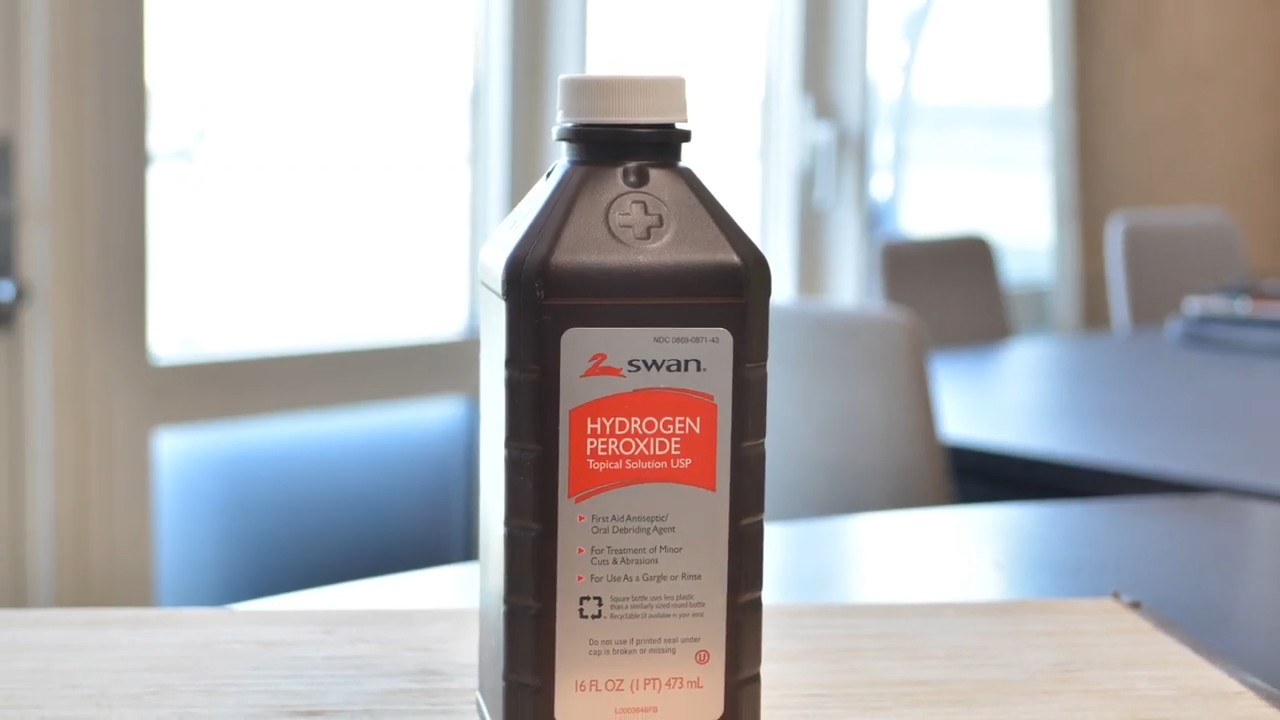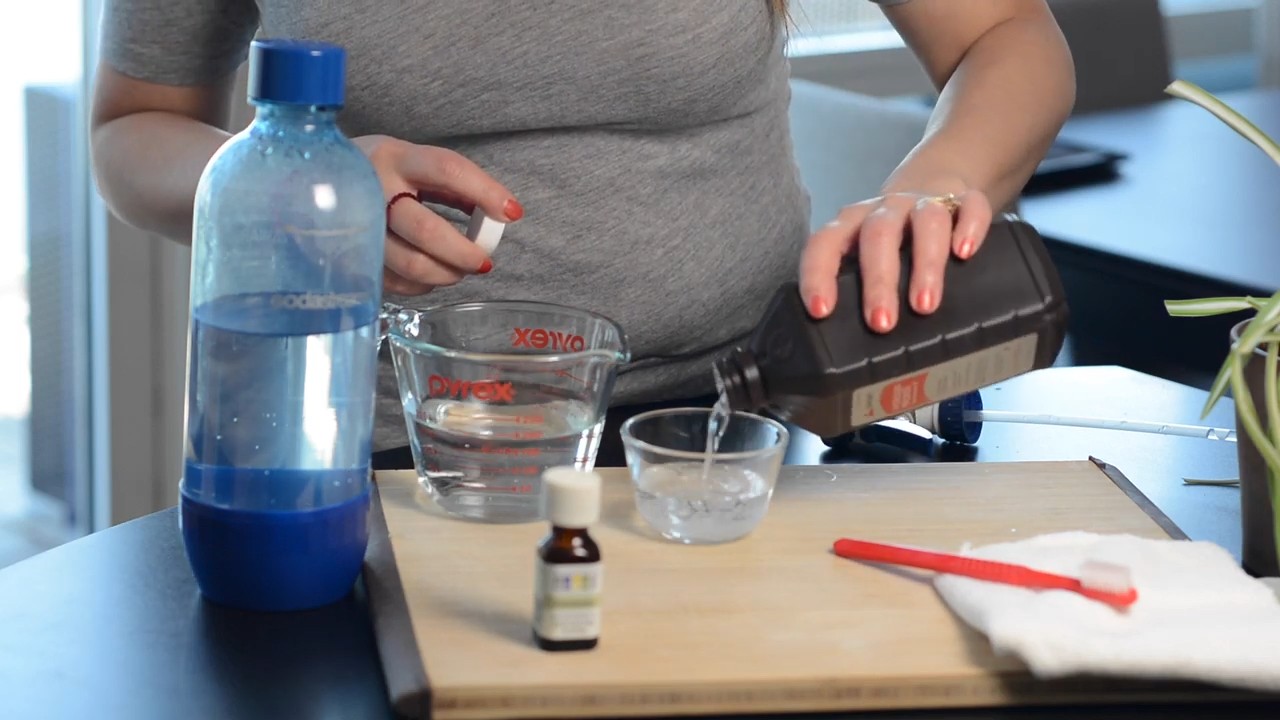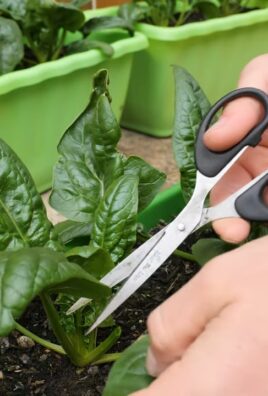Peroxide Green Cleaning Recipes: Unlock the sparkling potential of your home with these simple, effective, and eco-friendly solutions! Are you tired of harsh chemicals and their lingering odors? Do you dream of a clean home without harming the environment or your family? I know I do! That’s why I’m so excited to share these amazing DIY peroxide green cleaning recipes with you.
For generations, resourceful homemakers have sought natural alternatives to keep their homes clean and healthy. From using vinegar and baking soda to harnessing the power of sunshine, the quest for non-toxic cleaning solutions is deeply rooted in our history. Now, we’re adding hydrogen peroxide to the mix 鈥?a readily available and surprisingly versatile cleaning agent.
Why should you embrace these peroxide green cleaning recipes? Because they offer a powerful clean without the harsh side effects. Many commercial cleaners contain harmful chemicals that can irritate skin, trigger allergies, and even contribute to indoor air pollution. By making your own cleaning solutions with hydrogen peroxide, you’re taking control of what enters your home and protecting your loved ones. Plus, you’ll save money and reduce your environmental footprint. Let’s dive in and discover how easy it is to create a sparkling clean home, the natural way!

DIY Peroxide Green Cleaning Recipes: Sparkling Clean Without the Harsh Chemicals
Hey there, fellow DIY enthusiasts! I’m always on the lookout for ways to keep my home clean and fresh without resorting to harsh chemicals. Peroxide, or hydrogen peroxide, is a fantastic, eco-friendly alternative that’s surprisingly versatile. It’s a natural disinfectant, deodorizer, and even a mild bleaching agent. Today, I’m going to share some of my favorite DIY peroxide cleaning recipes that will leave your home sparkling clean and smelling great!
General Safety Precautions
Before we dive in, let’s cover some important safety guidelines. While hydrogen peroxide is generally safe, it’s still important to handle it with care:
* Always wear gloves: Prolonged contact with skin can cause irritation.
* Avoid contact with eyes: If peroxide gets in your eyes, rinse immediately with plenty of water.
* Never mix with bleach: This creates toxic chlorine gas. Seriously, don’t do it!
* Store in a dark, cool place: Light and heat can degrade hydrogen peroxide, reducing its effectiveness.
* Test on an inconspicuous area first: Especially when cleaning fabrics or delicate surfaces.
Understanding Peroxide Concentrations
You’ll typically find hydrogen peroxide in a 3% concentration at your local drugstore. This is perfectly fine for most cleaning tasks. However, higher concentrations are available (like 6% or even higher), but these are much stronger and require even more caution. For the recipes below, we’ll be using the standard 3% solution unless otherwise specified.
All-Purpose Peroxide Cleaner
This is my go-to cleaner for almost everything! It’s effective on countertops, sinks, toilets, and even floors (with some adjustments, which I’ll explain later).
Ingredients:
* 1 part 3% hydrogen peroxide
* 2 parts water
* A few drops of your favorite essential oil (optional, for fragrance)
* Spray bottle
Instructions:
1. Combine ingredients: In a clean spray bottle, mix the hydrogen peroxide and water.
2. Add essential oil (optional): If you want a pleasant scent, add a few drops of your favorite essential oil. I personally love lemon, lavender, or tea tree oil.
3. Shake well: Gently shake the bottle to combine all the ingredients.
4. Spray and wipe: Spray the solution onto the surface you want to clean. Let it sit for a minute or two to disinfect, then wipe clean with a damp cloth or sponge.
Peroxide Toilet Bowl Cleaner
Say goodbye to harsh chemical toilet bowl cleaners! This peroxide-based solution is just as effective at killing germs and removing stains.
Ingredients:
* 1/2 cup 3% hydrogen peroxide
* 1/4 cup baking soda
Instructions:
1. Pour in peroxide: Pour the hydrogen peroxide into the toilet bowl.
2. Add baking soda: Sprinkle the baking soda into the bowl. You’ll notice a slight fizzing reaction, which is perfectly normal.
3. Let it sit: Allow the mixture to sit for at least 30 minutes, or even overnight for stubborn stains.
4. Scrub and flush: Scrub the bowl with a toilet brush and then flush.
Peroxide Laundry Booster
Peroxide is a fantastic laundry booster that can brighten whites, remove stains, and deodorize your clothes.
Ingredients:
* 1 cup 3% hydrogen peroxide
Instructions:
1. Add to washing machine: Add the hydrogen peroxide to the washing machine along with your regular laundry detergent. Pour it directly into the bleach dispenser or add it to the drum after the machine has filled with water.
2. Wash as usual: Wash your clothes as usual.
Important Note: Always test on an inconspicuous area of the fabric first to ensure it doesn’t cause any discoloration. Avoid using peroxide on delicate fabrics like silk or wool.
Peroxide Mold and Mildew Remover
Mold and mildew can be a real pain to get rid of. Peroxide is a great natural alternative to harsh bleach-based cleaners.
Ingredients:
* 3% hydrogen peroxide
* Spray bottle
Instructions:
1. Spray the affected area: Pour the hydrogen peroxide into a spray bottle and spray it directly onto the mold or mildew.
2. Let it sit: Allow the peroxide to sit for at least 10 minutes.
3. Scrub and wipe: Scrub the area with a brush or sponge to remove the mold or mildew.
4. Rinse and dry: Rinse the area with water and dry thoroughly.
Important Note: For heavily mold-infested areas, you may need to repeat this process several times. Also, ensure proper ventilation when dealing with mold.
Peroxide Glass and Mirror Cleaner
Get streak-free shine on your windows and mirrors with this simple peroxide cleaner.
Ingredients:
* 1 part 3% hydrogen peroxide
* 2 parts water
* Spray bottle
Instructions:
1. Combine ingredients: In a clean spray bottle, mix the hydrogen peroxide and water.
2. Spray and wipe: Spray the solution onto the glass or mirror and wipe clean with a microfiber cloth.
Peroxide Cutting Board Sanitizer
Cutting boards can harbor bacteria, so it’s important to sanitize them regularly. Peroxide is a safe and effective way to do this.
Ingredients:
* 3% hydrogen peroxide
Instructions:
1. Wash the cutting board: Wash the cutting board with soap and water to remove any food particles.
2. Spray with peroxide: Spray the cutting board with hydrogen peroxide.
3. Let it sit: Allow the peroxide to sit for 5-10 minutes.
4. Rinse and dry: Rinse the cutting board with water and dry thoroughly.
Peroxide Toothbrush Sanitizer
Your toothbrush can also harbor bacteria, so it’s a good idea to sanitize it regularly.
Ingredients:
* 3% hydrogen peroxide
Instructions:
1. Rinse toothbrush: Rinse your toothbrush with water after each use.
2. Soak in peroxide: Once a week, soak your toothbrush head in hydrogen peroxide for a few minutes.
3. Rinse thoroughly: Rinse the toothbrush thoroughly with water before using it again.
Peroxide Stain Remover for Clothes
Peroxide can be effective at removing certain types of stains from clothes, especially blood, grass, and sweat stains.
Ingredients:
* 3% hydrogen peroxide
Instructions:
1. Test on an inconspicuous area: Before applying peroxide to the stain, test it on an inconspicuous area of the fabric to ensure it doesn’t cause any discoloration.
2. Apply to stain: Pour a small amount of hydrogen peroxide directly onto the stain.
3. Let it sit: Allow the peroxide to sit for 10-15 minutes.
4. Blot the stain: Gently blot the stain with a clean cloth.
5. Wash as usual: Wash the garment as usual.
Important Note: Peroxide works best on fresh stains. Older stains may be more difficult to remove.
Peroxide Floor Cleaner
You can use the all-purpose cleaner recipe I shared earlier to clean your floors, but here are a few adjustments depending on the type of flooring you have:
* For tile and linoleum: The all-purpose cleaner recipe works great! Just spray and mop as usual.
* For hardwood floors: Be very careful! Peroxide can damage hardwood floors if used improperly. Dilute the all-purpose cleaner even further (1 part peroxide to 4 parts water) and use a damp mop, not a soaking wet one. Always test on an inconspicuous area first.
* For laminate floors: The all-purpose cleaner recipe should be fine, but again, use a damp mop and test on an inconspicuous area first.
Peroxide Deodorizer for Sponges and Dishcloths
Sponges and dishcloths can get pretty smelly. Here’s how to deodorize them with peroxide:
Ingredients:
* 1/2 cup 3% hydrogen peroxide
* 1/2 cup water
Instructions:
1. Soak the sponge or dishcloth: Mix the hydrogen peroxide and water in a bowl.
2. Submerge: Submerge the sponge or dishcloth in the solution.
3. Let it soak: Let it soak for at least 15 minutes.
4. Rinse and dry: Rinse the sponge or dishcloth thoroughly with water and allow it to air dry.
Peroxide Fruit and Vegetable Wash
I like to use a peroxide solution to wash my fruits and vegetables to remove any dirt, pesticides, or bacteria.
Ingredients:
* 1/4 cup 3% hydrogen peroxide
*

Conclusion
So, there you have it! Ditching harsh chemicals and embracing the power of peroxide for green cleaning isn’t just a trend; it’s a smart, effective, and surprisingly simple way to maintain a sparkling home. We’ve explored a range of recipes, from tackling stubborn bathroom grime to refreshing your kitchen surfaces, all powered by the humble hydrogen peroxide.
Why is this a must-try? Because it’s a game-changer for your health, your wallet, and the environment. You’re reducing your exposure to potentially harmful chemicals, saving money on expensive commercial cleaners, and contributing to a cleaner, greener planet. It’s a win-win-win!
But the beauty of these peroxide green cleaning recipes lies in their adaptability. Feel free to experiment with essential oils to create your own signature scents. Lavender, lemon, tea tree, and eucalyptus are all excellent choices that not only smell fantastic but also offer additional antibacterial and antifungal properties. For tougher stains, consider increasing the concentration of peroxide slightly, but always test on an inconspicuous area first to ensure it doesn’t damage the surface. You can also add a tablespoon of washing soda to your peroxide solution for extra cleaning power on greasy surfaces.
Don’t be afraid to get creative! Think about using peroxide to freshen up your laundry, disinfect your cutting boards, or even brighten your grout. The possibilities are endless.
We truly believe that once you experience the effectiveness and versatility of peroxide green cleaning, you’ll never go back to those harsh, chemical-laden cleaners again. It’s a simple switch that can make a significant difference in your home and your life.
So, what are you waiting for? Gather your ingredients, choose a recipe, and give it a try! We’re confident that you’ll be amazed by the results. And most importantly, we want to hear about your experience. Share your tips, tricks, and favorite peroxide green cleaning recipes in the comments below. Let’s build a community of eco-conscious cleaners and inspire others to make the switch! Your feedback is invaluable and helps us all learn and grow together. Let us know what worked best for you, any variations you tried, and any challenges you encountered. Together, we can create a cleaner, healthier, and more sustainable future, one sparkling surface at a time.
Frequently Asked Questions (FAQs)
What exactly is hydrogen peroxide, and is it safe to use for cleaning?
Hydrogen peroxide (H2O2) is a naturally occurring chemical compound that’s a combination of hydrogen and oxygen. It’s a powerful oxidizer, which means it can break down organic matter and kill bacteria, viruses, and fungi. When used properly, hydrogen peroxide is generally considered safe for cleaning. However, it’s important to use the correct concentration (typically a 3% solution for household cleaning) and to avoid mixing it with other cleaning agents, especially bleach, as this can create toxic fumes. Always wear gloves when handling hydrogen peroxide, and avoid contact with your eyes and skin. If contact occurs, rinse thoroughly with water.
Can I use hydrogen peroxide on all surfaces?
While hydrogen peroxide is generally safe for most surfaces, it’s always best to test it on an inconspicuous area first, especially on delicate or porous materials like natural stone, colored fabrics, or wood finishes. Hydrogen peroxide can sometimes lighten or discolor certain surfaces. Avoid using it on gold, silver, or copper, as it can cause tarnishing. For surfaces like granite or marble, use a diluted solution and wipe it off quickly. When in doubt, consult the manufacturer’s instructions for your specific surface.
How does hydrogen peroxide compare to bleach as a disinfectant?
Both hydrogen peroxide and bleach are effective disinfectants, but they have different properties and uses. Bleach is a stronger disinfectant and can kill a wider range of pathogens, but it’s also more corrosive and can damage surfaces. Bleach also produces strong fumes that can be irritating to the respiratory system. Hydrogen peroxide is a milder disinfectant and is less likely to damage surfaces or produce harmful fumes. However, it may not be as effective against certain types of bacteria and viruses. For general household cleaning and disinfecting, hydrogen peroxide is often a safer and more environmentally friendly option.
What’s the best way to store hydrogen peroxide?
Hydrogen peroxide should be stored in a cool, dark place, away from direct sunlight and heat. Exposure to light and heat can cause it to decompose and lose its effectiveness. Keep it in its original container, which is typically an opaque bottle to protect it from light. Make sure the cap is tightly sealed to prevent evaporation. Keep hydrogen peroxide out of reach of children and pets.
How long does hydrogen peroxide last once it’s opened?
Once opened, hydrogen peroxide can gradually lose its potency over time. However, if stored properly, it should remain effective for several months to a year. To test its effectiveness, you can pour a small amount into a sink and see if it fizzes when it comes into contact with organic matter. If it doesn’t fizz, it may have lost its potency and should be replaced.
Can I mix hydrogen peroxide with vinegar for cleaning?
While both hydrogen peroxide and vinegar are effective cleaning agents, it’s generally not recommended to mix them together. When combined, they can form peracetic acid, which is a potentially toxic and irritating compound. While the concentration of peracetic acid formed in a household setting is usually low, it’s still best to avoid mixing them. It’s safer to use them separately, one after the other, rinsing the surface in between.
What are some other uses for hydrogen peroxide besides cleaning?
Besides cleaning, hydrogen peroxide has a variety of other uses, including:
* **First aid:** Disinfecting minor cuts and scrapes.
* **Oral hygiene:** Rinsing your mouth to kill bacteria and freshen breath (use a diluted solution).
* **Laundry:** Brightening whites and removing stains.
* **Gardening:** Treating plant diseases and promoting root growth (use a diluted solution).
* **Hair care:** Lightening hair (use with caution and do your research).
Is it safe to use hydrogen peroxide around pets and children?
While hydrogen peroxide is generally considered safe when used properly, it’s important to take precautions when using it around pets and children. Keep hydrogen peroxide out of their reach and avoid spraying it directly on them. If they accidentally ingest hydrogen peroxide, it can cause stomach upset and vomiting. Contact a veterinarian or poison control center immediately if ingestion occurs. When cleaning with hydrogen peroxide, ensure the area is well-ventilated and allow it to dry completely before allowing pets and children to access it.
Can I use expired hydrogen peroxide for cleaning?
While expired hydrogen peroxide may not be as potent as fresh hydrogen peroxide, it can still be used for cleaning, especially for less demanding tasks. It may take longer to disinfect surfaces, and you may need to use a higher concentration. However, if the hydrogen peroxide has significantly degraded (e.g., it’s no longer fizzing), it’s best to discard it and use a fresh bottle.
What concentration of hydrogen peroxide should I use for cleaning?
For most household cleaning purposes, a 3% solution of hydrogen peroxide is sufficient. This is the concentration typically sold in drugstores and supermarkets. Higher concentrations of hydrogen peroxide can be more effective for disinfecting, but they can also be more corrosive and require more caution when handling. Always dilute higher concentrations of hydrogen peroxide before using them for cleaning.





Leave a Comment